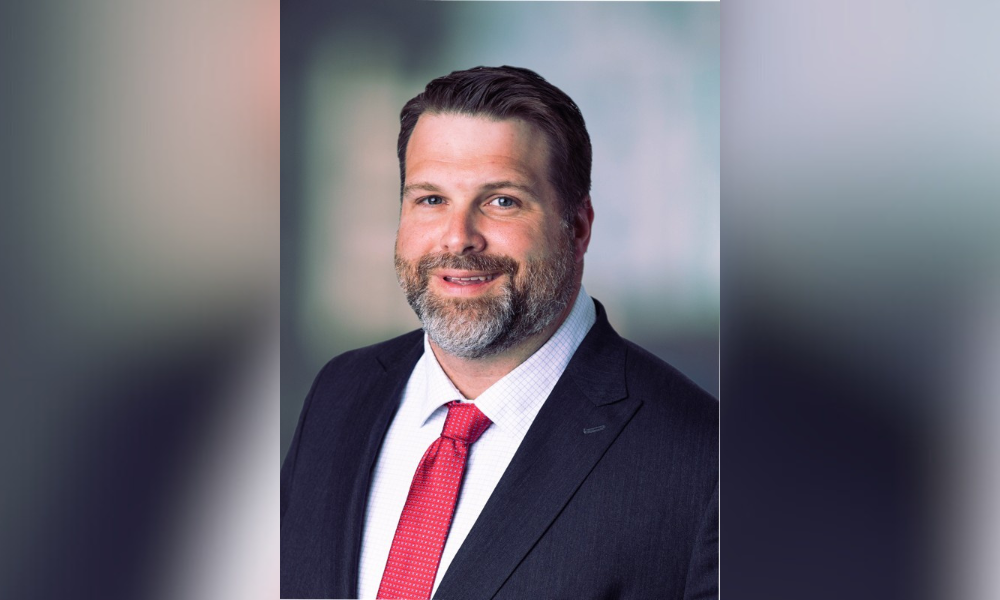Higher interest rates have opened 'new regime' with more fixed-income options, says investment industry leader

Against a backdrop of economic uncertainty and market turbulence, more investors and advisors are positioning themselves into short-term fixed income securities. While that might seem like a defensive shift at first blush, one investment industry expert thinks there’s more to the movement than meets the eye.
“I don’t know if I would say that the market is defensive,” Mark Noble, Senior Vice President of Retail Strategy and Sales Enablement at Guardian Capital, told Wealth Professional. “I think what we're actually seeing is people getting a lot more comfortable with what we could call ‘the new regime in investing’ with higher interest rates and equity markets continuing to surprise to the upside.”
Abundance of opportunity for PMs
Over the course of his career, Noble (pictured above) has seen a greater tendency among advisors to be reactive rather than proactive to market shifts, while portfolio managers tend to get ahead of the puck. As the larger macroeconomic environment shifts into higher-interest terrain, he sees a lot more portfolio movements that seem like a move into defense, but actually reflect a greater ability to be nimble in fixed income.
“We’re seeing a big trend amongst advisors, where they now have a lot more options in their fixed-income portfolio that simply didn't exist even 18 months ago,” Noble says.
Kevin Burkett, portfolio manager at Burkett Asset Management in BC, is seeing an abundance of opportunity to execute tax-loss harvesting strategies in fixed income, where he’s found the highest likelihood of losses across asset classes on a trailing 12-month basis.
“We construct bond portfolios for clients, and we’ll often buy and sell bonds opportunistically,” he told Wealth Professional in a recent interview. “If you buy a corporate bond maturing in 2026, sell it for a loss, and buy a bond from the same issuer with a different maturity date, you can trigger the loss immediately.
“This is something we’ve been doing for clients since mid-2022 … thinking about how we can reposition holdings within the bond basket to maintain certain portfolio characteristics, while benefiting from tax losses.”
Chad Larson, senior portfolio manager at MLD Wealth Management with CG Wealth Management, sees the inverted yield curve as an on-ramp onto a compelling long-term opportunity in Canadian bonds.
“We’re near the top of this rate-hiking cycle, so I’m willing to sacrifice a couple of points of yield,” Larson told WP. “When we get to the other side of this and yield curves normalize, I think we’ll see equity-like returns in long bonds.”
Chad Larson was awarded as one of the best financial advisors in Canada. Learn more about the winners here.
Opportunistic, not defensive
A defensive shift in portfolios would typically be accompanied by a selloff in equities, Noble adds, which is not what he’s been seeing. Instead, he says there seems to be a greater portion of portfolios carved out for what appear to be defensive exposures, but are actually just an embrace of better risk-reward trade-offs in fixed income.
“There doesn't seem to be a malaise or a defensive posturing among advisors, and terms of flows in funds and ETFs,” Noble says. “What looks like a shift to defensive assets is actually opportunistic.”
Right now, many advisors may be disheartened by the generally lower outlook for market returns and the prospective drag it will have on their record of portfolio performance. But Noble argues good advisors are focused on goals-based investment, which means constructing portfolios to meet their clients’ return and risk objectives.
“If advisors can meet more of their clients’ return target and do it by reducing risk in their portfolio, that's a win-win from a financial planning standpoint. I think that’s why this trend is out there,” Noble says. “It's not capitulation. It's actually a reorientation of advisors who are doing their jobs, and ensuring that their clients are getting more return for less risk.”



